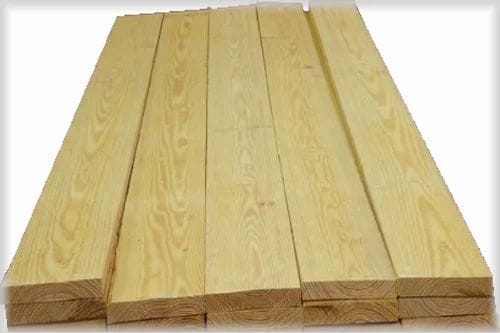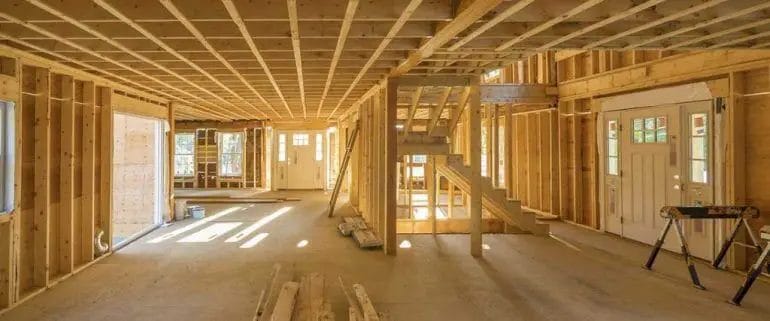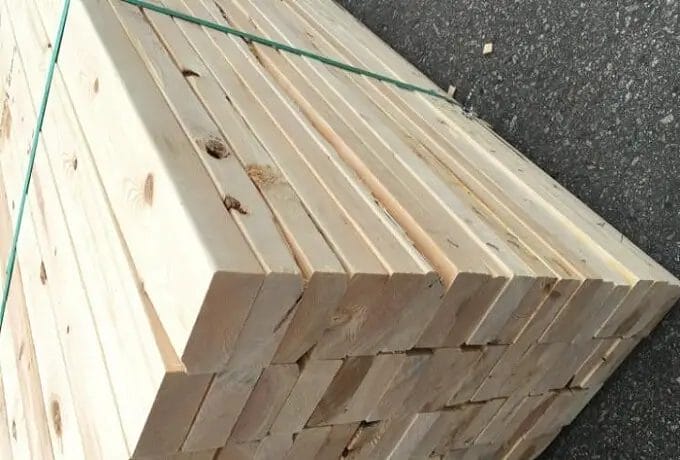SPF wood refers to a type of lumber that is made from spruce, pine, or fir trees. The acronym SPF stands for Spruce, Pine, and Fir, which are commonly used softwood species in the construction industry. SPF wood is known for its strength, durability, and versatility, making it a popular choice for various building projects. It is often used for framing, sheathing, and other structural applications. With its excellent strength-to-weight ratio and affordability, SPF wood is a reliable and cost-effective option for both residential and commercial construction projects.

Common uses of SPF wood in the building industry
In the building industry, SPF wood is widely used for a variety of purposes due to its unique characteristics and affordability. SPF stands for spruce, pine, and fir – the three types of wood that are commonly used in SPF lumber. Here are some of the common uses of SPF wood in the building industry:

1. Framing
SPF wood is extensively used for framing in residential and commercial construction projects. The strength and stability of SPF wood make it an ideal choice for constructing walls, floors, and roofs. The straight grain and uniform density of SPF wood allow builders to create sturdy and durable structures.
2. Trusses
Trusses, which are used to support the roof and distribute weight evenly, are often made from SPF wood. The dimensional stability and load-bearing capacity of SPF wood make it a reliable choice for constructing trusses. Additionally, SPF wood is lightweight, making it easier to handle and install.
3. Exterior siding
SPF wood is also commonly used as exterior siding in buildings. Its natural beauty and ability to hold finishes well make it an attractive option for enhancing the aesthetic appeal of a structure. SPF wood siding is durable, weather-resistant, and can withstand harsh environmental conditions.
4. Interior finishes
SPF wood is used for various interior finishes, including flooring, paneling, and trim. Its versatility and ability to take stains and finishes easily make it a popular choice among homeowners and interior designers. SPF wood adds warmth and character to interiors, creating a cozy and inviting atmosphere.
5. Decking and fencing
SPF wood is frequently used for decking and fencing due to its strength, durability, and affordability. It can withstand heavy foot traffic and resist rot and decay, making it an excellent choice for outdoor structures. SPF wood decking and fencing provide a natural and timeless look to outdoor spaces.
6. Plywood and engineered wood products
SPF wood is often used as a primary material for manufacturing plywood and engineered wood products. Its consistent density and structural stability make it ideal for producing high-quality and reliable wood composites. Plywood made from SPF wood is commonly used in various construction applications.
In summary, SPF wood is a versatile and cost-effective option for many building applications in the construction industry. From framing to exterior siding, interior finishes to decking, SPF wood offers strength, durability, and aesthetic appeal. Its widespread use in the building industry is a testament to its reliability and performance.

Characteristics and Properties of SPF Wood
SPF wood, which stands for Spruce-Pine-Fir, is a type of wood that is widely used in construction and woodworking industries. It is known for its exceptional strength, durability, and versatility. In this section, we will explore the various characteristics and properties of SPF wood that make it a popular choice for a wide range of applications.
Density
SPF wood has a relatively low density, which makes it lightweight and easy to work with. This characteristic makes it ideal for applications where weight is a concern, such as in the construction of furniture, cabinets, and other interior fixtures.
Strength
Despite its low density, SPF wood is remarkably strong. It has excellent load-bearing capabilities and can withstand heavy loads without bending or breaking. This makes it suitable for structural applications, including framing, trusses, and beams.
Dimensional Stability
One of the key properties of SPF wood is its dimensional stability. It has a low shrinkage and swelling tendency, meaning it is less prone to warping, twisting, or cupping when exposed to changes in humidity or moisture. This makes it an excellent choice for exterior applications, such as decking, fencing, and siding.
Straightness
SPF wood is known for its straight grain, which makes it easy to cut, mill, and shape. It is less likely to splinter or split, allowing for clean and precise cuts. This characteristic is highly desirable in applications where accuracy is paramount.
Workability
SPF wood is highly workable, which means it can be easily sawn, nailed, screwed, and fastened. It holds nails and screws securely, reducing the risk of loose or weak joints. Its workability also extends to finishing processes, as it can be stained, painted, or varnished to achieve the desired appearance.
Fire Resistance
While SPF wood is not inherently fire-resistant, it can be treated with fire-retardant chemicals to improve its fire resistance. This makes it suitable for applications where fire safety is a concern, such as in commercial buildings or structures requiring fire-rated materials.
Eco-Friendly
SPF wood is sourced from sustainably managed forests, making it an environmentally friendly choice. The spruce, pine, and fir trees used to produce SPF wood are renewable resources that can be replenished through responsible forestry practices.
Cost-Effective
Compared to other types of wood, SPF wood is relatively affordable. Its availability and ease of processing contribute to its cost-effectiveness, making it a popular choice for both commercial and residential projects.
Summary
SPF wood offers a multitude of beneficial characteristics and properties that make it a preferred choice for various applications. With its low density, exceptional strength, dimensional stability, and workability, SPF wood provides versatility and reliability. Whether it’s used in construction, carpentry, or other woodworking projects, SPF wood is a durable and cost-effective option that delivers excellent performance.

How to Properly Maintain and Treat SPF Wood
SPF wood, which stands for Spruce, Pine, and Fir, is a popular choice for construction and outdoor projects due to its durability and affordability. However, like any other type of wood, SPF wood requires regular maintenance and treatment to ensure its longevity and appearance. In this section, we will discuss some essential steps to properly maintain and treat SPF wood.
Cleaning
Regular cleaning is one of the simplest yet most effective ways to maintain SPF wood. Begin by removing any dirt, debris, or leaves from the surface using a broom or a soft brush. Next, create a mixture of mild soap and water and gently scrub the wood using a soft bristle brush. Rinse the wood thoroughly with clean water and allow it to dry completely before proceeding to the next step. Avoid using harsh chemicals or high-pressure washers, as they can damage the wood fibers.
Sealing
Applying a sealant or preservative to SPF wood is crucial for protecting it from moisture, UV rays, and other external elements. Start by inspecting the wood for any signs of damage or wear. Use a wood filler to repair any cracks or holes, and sand the surface to create a smooth finish. Choose a sealant or preservative that is suitable for outdoor use and follow the manufacturer’s instructions for application. Apply the product evenly using a brush, roller, or sprayer, and make sure to cover all exposed surfaces. Allow the sealant to dry completely before using or exposing the wood to rain or direct sunlight.
Staining and Painting
If you wish to enhance the appearance of SPF wood or change its color, staining or painting is a great option. Before starting, ensure that the wood is clean and dry. If needed, sand the surface lightly to remove any roughness. Apply a wood primer to improve paint adhesion and prevent discoloration. Once the primer is dry, you can proceed with the staining or painting process. Choose a high-quality exterior wood stain or paint that is suitable for SPF wood and follow the manufacturer’s instructions for application. Apply the stain or paint evenly using a brush or roller, and allow it to dry completely before applying additional coats if necessary.
Regular Inspections
Regularly inspecting SPF wood is essential to identify and address any issues before they escalate. Check for signs of rot, decay, or insect infestation, such as holes, soft spots, or crumbling wood. If you notice any damage, promptly repair or replace the affected areas to prevent further deterioration. Additionally, keep an eye out for any loose nails or screws and tighten them as needed. By conducting regular inspections, you can catch problems early on and ensure the longevity of your SPF wood.
Protection from Elements
To protect SPF wood from excessive moisture and sun exposure, it is essential to take certain precautions. If possible, avoid installing SPF wood in areas where it will be constantly exposed to rain or direct sunlight. Consider using protective coverings such as awnings, pergolas, or specialized wood coatings to shield the wood from the elements. Providing proper ventilation around the wood can also help prevent moisture buildup and promote its longevity.
In summary, maintaining and treating SPF wood is crucial to preserve its durability and appearance. Regular cleaning, sealing, staining or painting, regular inspections, and protection from the elements are key steps to ensure the longevity of SPF wood. By following these guidelines, you can enjoy the beauty and functionality of SPF wood for years to come.
Comparing SPF Wood to Other Types of Lumber
When it comes to choosing the right type of lumber for your construction project, it’s important to understand the key differences between various options. One popular choice is SPF wood, which stands for Spruce, Pine, and Fir. SPF wood is known for its versatility, durability, and cost-effectiveness. In this section, we will compare SPF wood to other types of lumber to help you make an informed decision.
1. Hardwood vs. Softwood
Before diving into the specifics, it’s essential to understand the distinction between hardwood and softwood. Hardwood comes from deciduous trees like oak, walnut, or maple, while softwood is derived from coniferous trees like spruce, pine, and fir. SPF wood falls into the softwood category, making it lighter and less dense than hardwood.
2. Strength and Durability
While hardwood is generally known for its strength, SPF wood can still offer impressive durability. The strength of lumber depends on factors such as the species of the tree, the growth conditions, and the quality of processing. SPF wood is often used in structural applications, such as framing and joists, where its adequate strength levels are sufficient.
3. Cost-Effectiveness
One of the major advantages of SPF wood is its affordability compared to hardwood options. Softwoods are generally more abundant and grow faster, which makes them more cost-effective. SPF wood is widely available and competitively priced, making it a popular choice for both residential and commercial projects.
4. Appearance
When it comes to appearance, hardwood generally has a more visually appealing look with rich grain patterns and a wide range of color options. On the other hand, SPF wood has a more uniform appearance with a pale yellowish hue. However, SPF wood’s neutral appearance makes it versatile and easy to paint or stain to match your desired aesthetic.
5. Application and Availability
SPF wood is commonly used in a variety of construction projects due to its versatility. It is suitable for framing, sheathing, decking, and other structural applications. Moreover, SPF wood is readily available in most home improvement stores, making it easily accessible for contractors and DIY enthusiasts alike.
6. Environmental Considerations
Another important aspect to consider is the environmental impact of the chosen lumber. Softwoods like SPF wood are generally more sustainable as they grow faster and are often harvested from responsibly managed forests. However, it’s crucial to ensure that the SPF wood you purchase comes from certified sustainable sources to support responsible forestry practices.
7. Maintenance
In terms of maintenance, SPF wood requires regular care to maintain its longevity. Like any other type of lumber, SPF wood should be protected from moisture, pests, and regular wear and tear. Proper sealing, staining, or painting, along with routine inspections and repairs, can help extend the lifespan of SPF wood.
8. Overall Summary
In summary, SPF wood offers numerous advantages as a cost-effective and versatile option for construction projects. While it may not have the same visual appeal as hardwood, SPF wood’s strength, durability, and availability make it a popular choice for structural applications. By considering your specific project requirements, budget constraints, and environmental considerations, you can make an informed decision when comparing SPF wood to other types of lumber.
FAQs
What is SPF wood?
SPF stands for Spruce-Pine-Fir, which is a type of wood commonly used in construction. It is a collective term that refers to lumber made from spruce, pine, and fir trees. SPF wood is known for its strength, durability, and versatility, making it popular for various applications such as framing, decking, and fencing.
Is SPF wood treated?
No, SPF wood is typically not treated. It is commonly used in its natural state or with minimal modifications. However, if specific protection against decay or insects is required, the wood can be treated with appropriate preservatives to enhance its longevity.
What are the advantages of SPF wood?
SPF wood offers several advantages. It is cost-effective, readily available, and easy to work with. It has good strength-to-weight ratio, making it suitable for structural applications. The wood is known for its dimensional stability, which means it is less prone to warping or twisting. Additionally, SPF wood accepts stain and paint well, allowing for customization.
Conclusion
In conclusion, SPF wood, which stands for Spruce, Pine, and Fir, is a popular and widely used type of lumber in various construction projects.
With its exceptional strength, durability, and affordability, SPF wood has become a go-to choice for many builders and homeowners alike.
Its versatility and ease of use make it suitable for a wide range of applications, including framing, decking, siding, and more.
Furthermore, the natural resistance of SPF wood to rot and decay, when properly maintained, ensures a long-lasting and reliable structure.
Whether you’re embarking on a DIY project or working on a larger-scale construction, SPF wood can provide the necessary strength and stability at an affordable cost.
Consider SPF wood for your next building project and enjoy its numerous benefits and qualities.